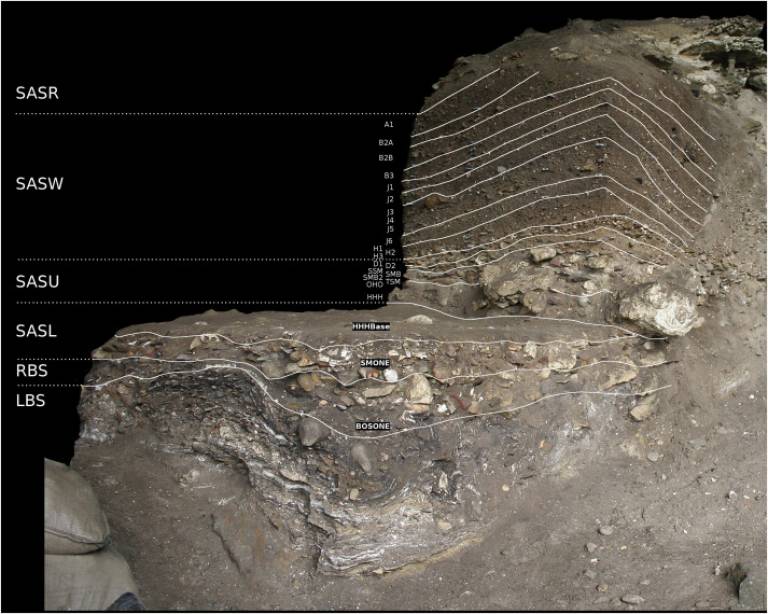New Uranium-Thorium Dates at Klasies River Mouth suggest that the SASU sub-member is 126 years of age
13 November 2018
In this paper the new excavations at Klasies River main site are introduced and the first results presented and linked with previous work, establishing a baseline for future reporting.
 Data from the earliest phase of the SAS member, comprising the basal SASU and SASL sub-members from caves 1 and 1A are discussed. A new U-Th date of 126.0 ± 1.5 ka on flowstone associated with fallen tufa material within the base of the SASU sub-member provides a maximum age for this part of the sequence. The lowermost SASU sub-member formed most likely around 100 000 years ago during a period associated with increased precipitation whereas the age of the underlying SASL sub-member is uncertain. The SASU sub-member contains in situ deposits that include hearths, in contrast to the underlying SASL sub-member that was subject to post depositional disturbance. Despite the different site formation processes the lithic industry of both sub-members is similar although quartz utilization is somewhat more prominent in the SASL sub-member. The main reduction strategy involves a parallel unidirectional convergent method to produce quartzite blade and point blanks with rare retouch. Relatively more browsing fauna and riparian species, indicating more closed environments, occur in the SASU layers. The older SASL sub-member, not previously described as an independent unit, contains relatively more grazers suggesting drier and more open habitats. It is vital to link evidence from coastal sites such as Klasies River to data from the interior to promote insight into modern human origins from a wider landscape perspective. The work of James Brink, to whom this paper is dedicated, is invaluable in developing this connection.
Data from the earliest phase of the SAS member, comprising the basal SASU and SASL sub-members from caves 1 and 1A are discussed. A new U-Th date of 126.0 ± 1.5 ka on flowstone associated with fallen tufa material within the base of the SASU sub-member provides a maximum age for this part of the sequence. The lowermost SASU sub-member formed most likely around 100 000 years ago during a period associated with increased precipitation whereas the age of the underlying SASL sub-member is uncertain. The SASU sub-member contains in situ deposits that include hearths, in contrast to the underlying SASL sub-member that was subject to post depositional disturbance. Despite the different site formation processes the lithic industry of both sub-members is similar although quartz utilization is somewhat more prominent in the SASL sub-member. The main reduction strategy involves a parallel unidirectional convergent method to produce quartzite blade and point blanks with rare retouch. Relatively more browsing fauna and riparian species, indicating more closed environments, occur in the SASU layers. The older SASL sub-member, not previously described as an independent unit, contains relatively more grazers suggesting drier and more open habitats. It is vital to link evidence from coastal sites such as Klasies River to data from the interior to promote insight into modern human origins from a wider landscape perspective. The work of James Brink, to whom this paper is dedicated, is invaluable in developing this connection.
Connections, culture and environments around 100 000 years ago at Klasies River main site
Sarah Wurz, Silje Evjenth Bentsen, Jerome Reynard, Liezl Van Pletzen-Vosa, Mareike Brenner, Susan Mentzer, Robyn Pickering, Helen Green
DOI: 10.1016/j.quaint.2018.03.039
 Close
Close

